The present “corona shutdown” prevents work and observations at the STScI, so the backyard telescopes of our members have been and are increasingly being used. Many nights with particularly clear skies, in combination with the new moon in the last third of March, brought the best conditions for observing and photographing the gas nebulae in the winter constellations that are now saying goodbye to the evening sky. The photos presented here were taken between 17 and 25 March 2020, at the outskirts of the city of Wissen.
The title image shows the Rosette Nebula with the embedded open star cluster NGC2244. The objects are located in the constellation Unicorn a little to the left (east) of the reddish star Beteigeuze in Orion. The gas nebula consists mainly of atomic hydrogen, in the nebula center large parts of the gases have collapsed due to their gravity. This is how the stars in this nebula formed relatively recently. It is located at a distance of about 5000 light years and has an apparent size of about two full moon diameters. The photo is a false-color image in the Hubble color palette: The light components of the ions of sulfur, hydrogen and oxygen selected by narrow-band filters have been assigned to the classic primary colors red, green and blue.
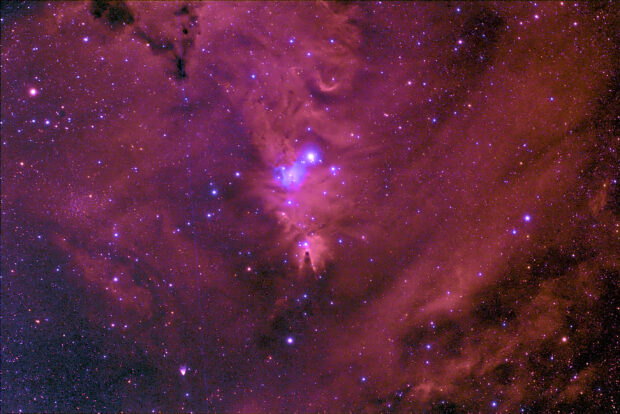 NGC 2264 (Fig. 2) shows a red glowing gas accumulation in atomic hydrogen (“H-II region”) with an embedded star cluster (“Christmas tree cluster”) and blue glowing dust particles. A dust cloud in the foreground (“dark cloud”) absorbs light from the nebula in such a way that in the lower part the cone-shaped dark area is formed, which gave the area the name “Cone Nebula”. The whole region is located about 2500 light years away in the constellation of Unicorn just above (north) of the Rosette Nebula and has dimensions comparable to the latter. Photos in the light of the hydrogen-alpha line and in the color ranges blue, green and red were combined in such a way that the colors in the image correspond quite well to the perception of the human eye.
NGC 2264 (Fig. 2) shows a red glowing gas accumulation in atomic hydrogen (“H-II region”) with an embedded star cluster (“Christmas tree cluster”) and blue glowing dust particles. A dust cloud in the foreground (“dark cloud”) absorbs light from the nebula in such a way that in the lower part the cone-shaped dark area is formed, which gave the area the name “Cone Nebula”. The whole region is located about 2500 light years away in the constellation of Unicorn just above (north) of the Rosette Nebula and has dimensions comparable to the latter. Photos in the light of the hydrogen-alpha line and in the color ranges blue, green and red were combined in such a way that the colors in the image correspond quite well to the perception of the human eye.
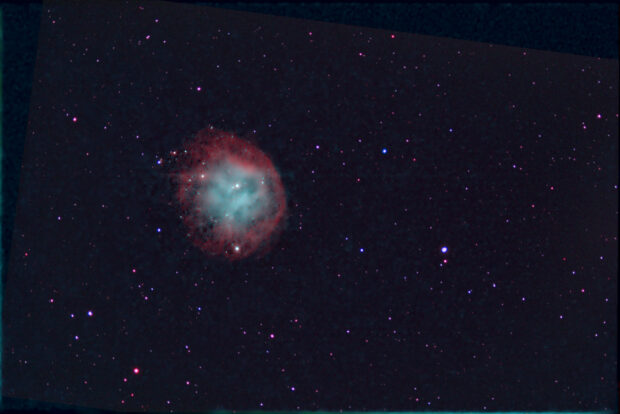 Abell 31 in image 3 is a planetary nebula in the constellation of Cancer. Such objects are final states of stars with about one solar mass after the outer gaseous envelopes have been ejected. Abell 31 is one of the apparently largest planetary nebulae. Due to its apparent size it has a very low surface brightness. The shape of the red hydrogen front indicates a mixing of the nebula with interstellar matter. The latter and the large extent are indications of the old age of the planetary nebula, which is in the process of dissolving. The greenish glow in the centre is caused by doubly ionised oxygen atoms. In our region, such objects can only be successfully photographed with narrow-band filters, with which a significant part of the artificial sky illumination can be suppressed. When using “normal” color cameras, the nebula would not stand out from the sky background. Here, only in the light of the hydrogen-alpha line and the lines of doubly ionized oxygen at about 500nm, about seven hours were exposed with a cooled CMOS camera.
Abell 31 in image 3 is a planetary nebula in the constellation of Cancer. Such objects are final states of stars with about one solar mass after the outer gaseous envelopes have been ejected. Abell 31 is one of the apparently largest planetary nebulae. Due to its apparent size it has a very low surface brightness. The shape of the red hydrogen front indicates a mixing of the nebula with interstellar matter. The latter and the large extent are indications of the old age of the planetary nebula, which is in the process of dissolving. The greenish glow in the centre is caused by doubly ionised oxygen atoms. In our region, such objects can only be successfully photographed with narrow-band filters, with which a significant part of the artificial sky illumination can be suppressed. When using “normal” color cameras, the nebula would not stand out from the sky background. Here, only in the light of the hydrogen-alpha line and the lines of doubly ionized oxygen at about 500nm, about seven hours were exposed with a cooled CMOS camera.
Images and text: Peter Stinner, member of the STScI.
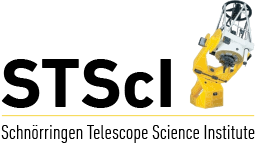

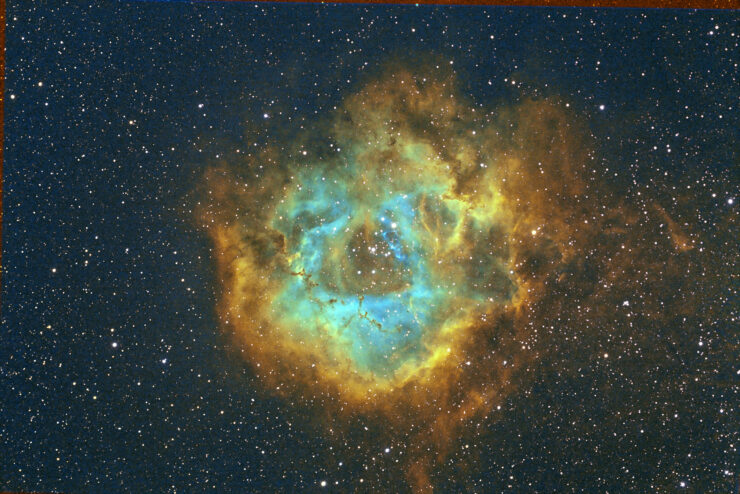
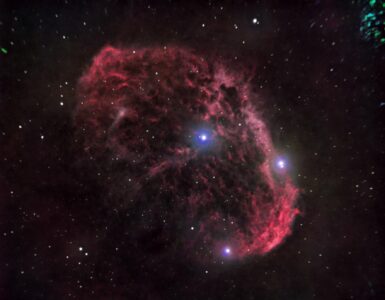
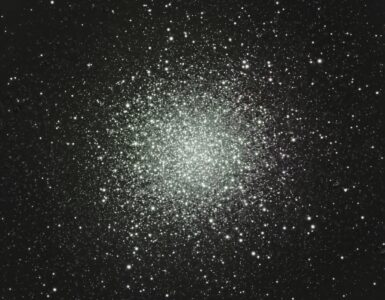
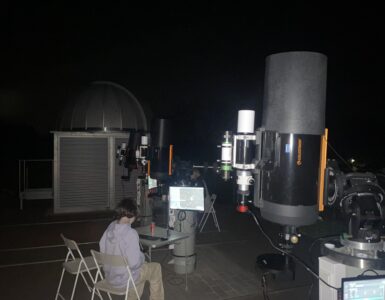
Add comment